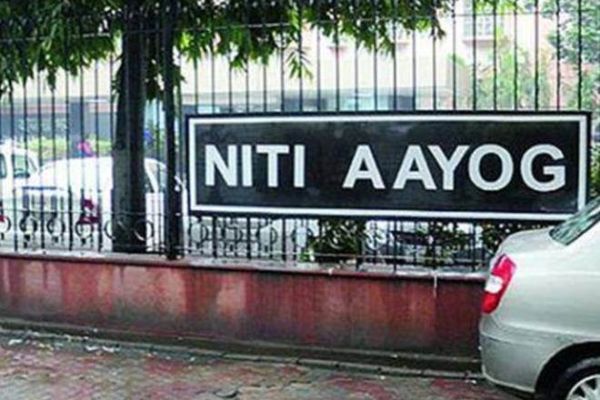
Aspirational Districts initiative a breath of fresh air
 By Alok Kumar, Neil Buddy Shah & Ronald Abraham,
By Alok Kumar, Neil Buddy Shah & Ronald Abraham,
The NITI Aayog recently launched the first round of ranking of India’s Aspirational Districts. The ranking, based on the socio-economic performance of 100+ districts, marks the initiation of a significant shift in development policy formulation in the country.
Over the years, India has focused much energy on fostering economic growth, and to good effect. As the recently released Economic Survey reports, the economy grew by over 7.5 per cent annually from 2011 to 2016, and is projected by the World Bank to be the fastest-growing major economy in the world over the next three years. This growth has lifted millions out of poverty, and bodes well for the future welfare of citizens.
However, economic growth cannot be sustained without a commensurate improvement in human capital, nor can the welfare of citizens improve through growth alone. We have a more sobre record in developing human capital. This is untenable and impedes genuine progress for India’s poor.
In education, thanks to Sarva Shiksha Abhiyaan, nearly all our children are accessing primary schools. However, retention and learning outcomes remain a challenge. In health, progress seems somewhat better, with infant mortality declining from 44 to 34 deaths per 1,000 births from 2011 to 2016. But India’s poorer neighbour, Bangladesh, has better health indicators .
How can we accelerate advancement of human capital as rapidly as we have economic growth? We argue that three fundamental changes in our approach to social policy are necessary. One, we need a shift in focus from inputs and budget outlays to social outcomes. Two, top-down policies should be eschewed in favour of local experimentation. Finally, a robust field data collection infrastructure that enables data-driven decision-making is required.
Such a transformational shift is precisely the goal of the government’s Aspirational Districts initiative. Anchored at NITI Aayog, this initiative aims to improve socio-economic outcomes in 100+ of India’s poorest districts, home to over 250 million people.
Under this initiative, districts will be ranked quarterly based on their ability to improve socio-economic outcomes. The rankings will be used to empower and incentivise District Collectors (DCs) to innovate and improve. And DCs will get policy guidance using evidence-backed best practices and a platform to learn from each other’s successes. Further, all tiers of government, a range of foundations, and civil society organisations are converging to support this initiative.
We are optimistic that the Aspirational Districts initiative can significantly augment socio-economic outcomes in India’s poorest regions. Below we analyse the three main policy shifts attempted by this initiative.
Traditionally, communication between government departments has largely revolved around inputs and prescriptive instructions. Thousands of reams of paper and meeting hours are expended to assess progress on budget line items and inputs, ranging from school walls to hospital beds.
The Aspirational Districts initiative’s exclusive focus on outcomes — the index for district ranking is built using only outcome indicators — is a breath of fresh air. Each district in terms of socioeconomic outcomes will be in the forefront of the agenda, rather than a footnote. Progress will be defined by achieving welfare targets, rather than budgetary ones. The conversation can gravitate to getting results for India’s citizens, rather than input-oriented reports.
Secondly, central government programmes are associated with prescriptive and rigid programme guidelines with little or no room for localisation. For example, the Right to Education Act gets into minutiae such as school boundary walls. MGNREGA guidelines cap the overhead ratio for all districts at the same level regardless of their size and labour demand. Many more examples abound.
For the Aspirational Districts initiative, there are no top-down guidelines. Instead, DCs will be provided with evidence-backed recommendations based on best practices and incentivised to tailor solutions based on the specific contexts of their districts. They are also empowered to go beyond these suggestions and innovate. This provides a rich laboratory of experiments from which ideas proven to be impactful can rise to the top.
Thirdly, development policy has traditionally been input-oriented and prescriptive because high-quality, regular and granular data on socio-economic outcomes were simply not available. A results-based management approach is only tenable if this data vacuum is filled. This data vacuum also helps explain why policymaking is anecdote-driven rather than data-driven, and why last-mile implementation failures go largely unaddressed.
The government’s administrative data is important, but cannot fully address this data gap. While administrative data is usually frequent (real-time dashboards) and granular (often up to village level), it suffers from biases because of employee self-reporting or other conflicts of interests. And while independent surveys like the National Family Health Survey have more reliable estimates, the data is available after long intervals and is usually only reported at the state level.
The Aspirational Districts initiative upends this lack of regular, high-quality, field-based granular data. NITI Aayog and its partners are setting up an independently-run data infrastructure with feet on the ground and technology-based management methods. This infrastructure will independently track household-level socio-economic data on health, education, financial inclusion, and many other sectors on a quarterly basis.
With a large sample of households in each district, this is a hitherto unmatched scope, scale and frequency of welfare measurement in the history of India’s development journey. The data, to be provided on a public dashboard, will not only aid this initiative but also the work of public sector officials, development practitioners, and researchers more broadly.
We are still in the early days of the Aspirational Districts initiative. We are cautiously optimistic that the pioneering policy shifts of this initiative will enable innovative solutions to improve the lives of our citizens and help create a new benchmark for policymaking in India.
(Alok Kumar [IAS] is Advisor, Health, at NITI Aayog. Neil Buddy Shah and Ronald Abraham are CEO and Partner at IDinsight, which provides analytical and impact measurement support for the Aspirational Districts initiative)
—IANS
